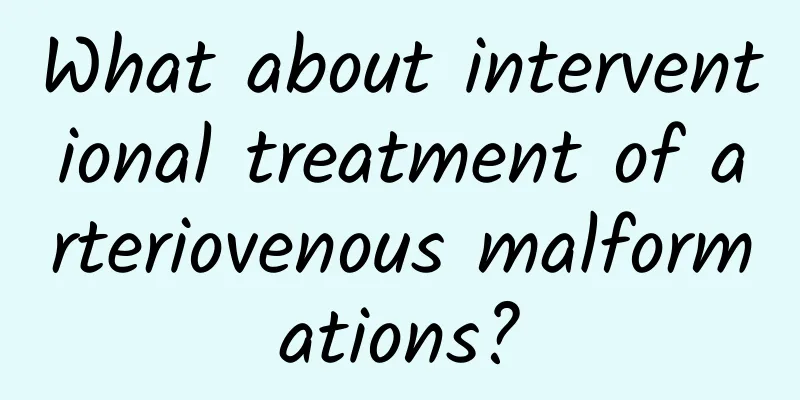What about interventional treatment of arteriovenous malformations?

|
The role of the blood circulation system in the human body is quite critical. It is the basic condition for maintaining body functions. The blood circulation system is divided into arteries and veins. The strength of blood vessels varies depending on the physical constitution of each person. Among them, people with delicate bodies are prone to arteriovenous diseases. Modern medical technology can use advanced treatment methods to deal with it. Let’s take a look at how the interventional treatment of arteriovenous malformations works. There are many types of diseases that can be treated with interventional therapy, covering almost all major diseases of all systems and organs in the body. Of course, its advantage lies mainly in the minimally invasive treatment of vascular and solid tumors. Interventional treatments include percutaneous transluminal angioplasty and vascular stent placement for the treatment of vascular stenosis and occlusion, thrombolytic therapy for the treatment of arteriovenous thrombosis, bleeding control (acute and chronic trauma, postpartum, inflammation, varicose veins, etc.), embolization of vascular malformations and arteriovenous fistulas and hemangiomas, inferior vena cava filters for the prevention of pulmonary embolism, transjugular intrahepatic portosystemic shunt (TIPSS) technology for the treatment of portal hypertension in cirrhosis, various angiographic diagnoses, venous blood sampling diagnosis, etc. With its advantages of high efficiency, wide indications and few complications, it has now become the preferred treatment method for some diseases. 1. Diseases requiring medical treatment Such as chemotherapy for tumors and thrombolysis for blood clots. Compared with medical treatment, the advantages of interventional treatment are: the drugs can act directly on the lesion site, which can not only greatly increase the drug concentration in the lesion site and improve the efficacy, but also greatly reduce the drug dosage and reduce the systemic side effects of the drug. 2. Diseases requiring surgical treatment The advantages of interventional treatment over surgical treatment are: ① It does not require surgery, no wounds or only a skin incision of a few millimeters to complete the treatment, so it is less traumatic; ② Most patients only need local anesthesia rather than general anesthesia, which reduces the risk of anesthesia; ③ Little damage to normal tissues, fast recovery, and short hospitalization time; ④ For elderly critically ill patients who cannot tolerate surgery or patients who have no chance of surgery, interventional treatment can also provide good treatment. |
<<: Do I need to fast for venous blood drawing?
>>: How to treat great saphenous vein insufficiency?
Recommend
What to do if Qi and blood stagnation? Choosing the right treatment is key
Drug therapy, diet therapy and exercise therapy c...
How to use personal lubricant
The main ingredients of today's human lubrica...
Myasthenia gravis crisis
We often see a word called myasthenia gravis on T...
One day of good care is better than a year! Don't say you're not moved
Lesser Heat is the 11th solar term among the 24 s...
What are the symptoms of STDs?
When it comes to sexually transmitted diseases, m...
What are the benefits of soaking your feet in pepper and ginger water?
Sichuan pepper and ginger are the most commonly u...
What are the effects of wolfberry
Lycium barbarum is very nourishing for women. Cli...
Stomach bloating and inability to defecate
Our human body often has many problems, especiall...
What are the therapeutic effects of black fungus?
Fungus is a common guest on ordinary people's...
Can I still have a baby after having an abortion for the second time?
It is difficult to say whether you will get pregn...
5 common side effects of oxygen therapy
5 common side effects of oxygen inhalation: Inhal...
What to do when a child has a fever while teething? Observe first and don’t treat blindly
I believe every child has had a fever. There are ...
What's going on with a protruding lump on the knee?
The knee is a joint that connects the thigh and c...
Will hypothyroidism make you thin?
Based on the characteristics of hypothyroidism an...
Can I use vinegar to wash my skin for allergies?
We all know that skin allergies are very common i...









